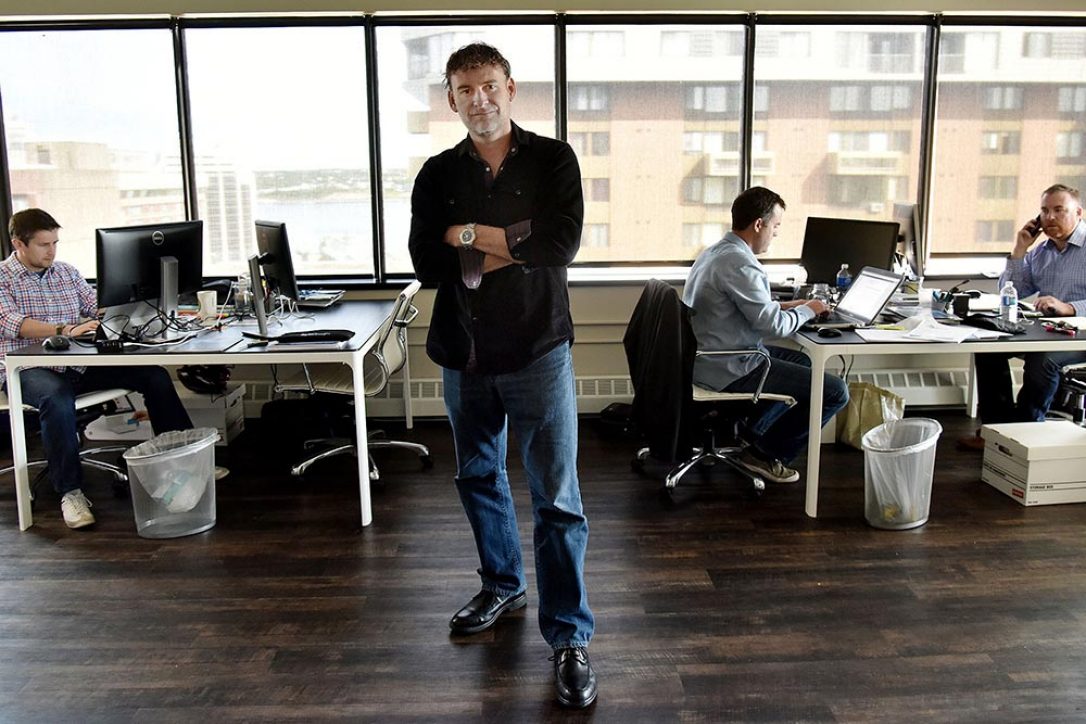For 20 years, Stephen and Bryan Sayle lived and worked in various places around the world, Stephen in safety-risk management and Bryan in digital IT design. Whenever they could, the two brothers would meet in pubs in obscure places and talk about merging their backgrounds.
Two years ago, they did just that, forming Sayle Group Inc. (saylegroup.com), a health, safety and environmental company that is helping companies promote a culture of safety within their organizations. “There was a real need for two things,” explains Stephen Sayle, CEO of the Halifax-based company, “a broad-based safety-culture movement and to bring digital technology into what primarily has been a paper-based industry.”
Strong or weak
Every business has a safety culture, he says, and it’s either strong or weak. If a safety culture is weak, Sayle explains, it exposes a company to incidents and injuries, high costs and staff turnover — even potential fines and imprisonment. “A strong safety culture is your most reliable defense against incidents,” he says. “It is the positive belief that everyone has the right to go to work, do their job well and come home safe.”
While that’s ostensibly what everyone in the workforce wants, the Sayles felt that the concept of a safety culture could be stronger — and there needed to be digital tools to help a younger generation of workers grasp it. “What we identified was not uncommon in many industries,” says Sayle. “There’s a demographic shift occurring where very experienced veterans are starting to leave the workforce, and coming in is a new generation of young tech-savvy workers. We wanted to take the years of experience and put it in a medium that the younger generation can use fluently.”
Losing the paper trail
The company consults in health, safety and environmental risk management, and they are building safety apps to put in the hands of employees to reduce or eliminate paper-based safety management systems. “My brother did not believe that safety was so paper-based until I sent him out to a couple of drilling locations in the western United States and Canada,” says Sayle. “He went out to the drill rig and the first thing he found was stacks and stacks of safety paperwork.”
Indeed, even now, the vast majority of safety is still done using a clipboard and paper checklists. The Sayles are transforming those tools into smartphone technology so workers can do job-risk assessments in the field using their phones to document that information, identifying hazards and the control measures needed to stay (or get) safe, and sending it immediately to head office. The apps are currently in prototype mode, and the Sayles are demonstrating them at conferences. Later this fall, they hope to release them commercially.
In the meantime, the company’s online Safety Culture program was launched this summer and consists of four tutorials that can be taken on a tablet, desktop or smartphone in just five minutes. Topics include safety culture, employee rights, hazards, and employer responsibilities.
“The feedback has been overwhelmingly positive,” says Sayle. “We’ve had seasoned veterans saying how important it was to have a refresher and young workers saying it should be mandatory training in high schools, universities and colleges.” The course is focused on creating a safety culture movement across Canada, but Sayle says with minor revisions, it can reflect the newest international safety standards and be relevant anywhere in the world. “A strong safety culture results in a safe working environment, improved morale, increased productivity and new business opportunities,” he explains. “It allows you to increase your competitive position in supply chains. Companies with a strong safety culture win more business. Period.”
